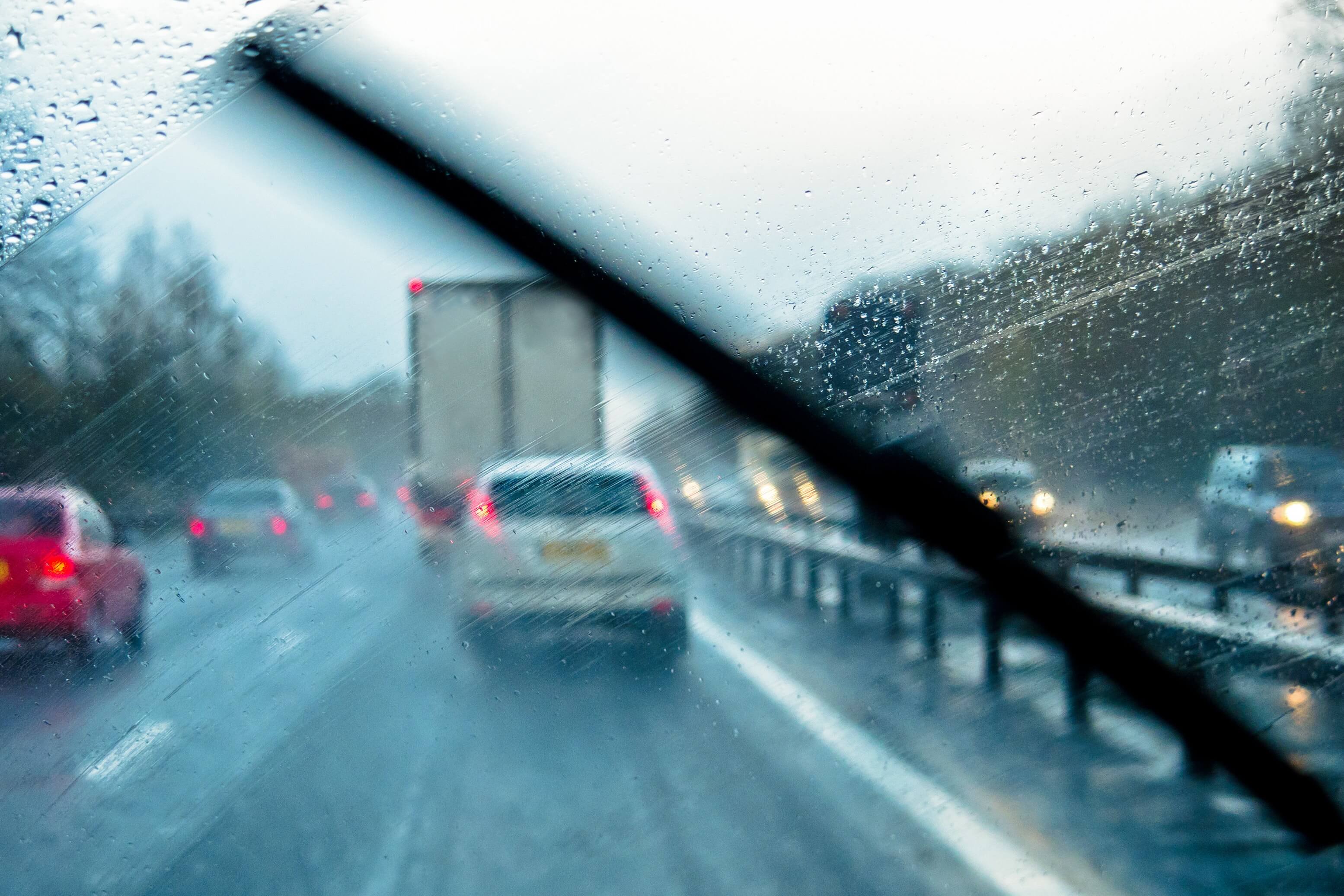Heavy rain and severe storms aren’t unusual anymore. Flood warnings might feel like an everyday thing in the UK during some seasons.
Any adverse weather can make the roads very dangerous – it’s not the same thing driving in heavy rain or through floods as it is on a dry day. To help you feel safe even when the roads get wet, we explain what you need to know about driving in heavy rain or through floods.
Preparing for wet roads
Firstly, assess whether it’s absolutely essential for you to travel. It might be better to find other means of transport. If there’s a flood warning and your car is parked up, try and get it to higher ground – water can play havoc on your electrics!
If you need to drive, give someone your route and expected arrival time, in case you get stuck, and make sure your mobile is charged. Before heading off do a few quick checks:
- Check that your windscreen washer is topped up and the windscreen wipers are working normally.
- Check that your tyres have the legal tyre tread depth so that there’s a safe grip on the slippery roads.
- Listen to your local news for updates on road closures and weather forecast.
- Avoid roads that you know are in poor condition. Hidden potholes or country road ditches can cause a lot of damage.
Driving in heavy rain
- Most importantly, reduce your speed. Stopping distances in heavy rain are double to a dry road, according to The Highway Code.
- With doubled stopping distances, you should also leave twice as much space between you and the car in front as you normally do.
- Follow any road signs that indicate problems within the road ahead – it’s not worth to risk it!
- Turn your dipped headlights on, they’re required if your visibility is heavily reduced. You might need to use fog lights but switch them off as soon as visibility improves.
- Watch out for cars passing you as they’re likely to create spray. Be considerate towards others too, including pedestrians, and slow down when you’re passing them.
- Keep your air-con on the avoid misting up your windows.
- If you break down and call for help, keep the bonnet closed to avoid your electrics getting soaked and damaged. Don’t restart your engine once you’ve stopped as water might have entered the intake of your car.
Aquaplaning
Aquaplaning refers to your tyres floating on the water film of the road surface because they’re unable to clear all of the water. The built-up water will slightly lift the car off the road surface making you lose control of steering and feel stuck in the movement.
The first reaction might be to brake but it’ll cause you to skid, which is worse. Staying calm, let your pedals be and wait for the car to slow down by itself whilst steering lightly. You’ll feel the return of a normal grip as soon as the water clears off your tyres.
Driving on flooded roads
- If the roads are heavily flooded and you can’t tell how deep the water is, you shouldn’t go ahead. Anything deeper than 4 inches of water is too much and the water can cause serious damage to your car. Find a safe place to park and alternative means of getting to your destination.
2. If you think it’s a shallow puddle, proceed carefully. Drive very slowly until you’re out of the water.
3. Try not to stop in the middle of the flood, you don’t want the water to enter any parts of your engine or brakes.
4. Once you’ve gone through the water, stop for a moment if you can, to let any excess water drain out. Be aware the water from the puddle would’ve dropped along by other cars so it’s likely to be even more slippery.
5. Gently brush your brake pedal before you move ahead to create some friction and get rid of the moisture inside.
6. If you unexpectedly hit a pothole, or get stuck in the middle of the puddle, switch your engine off, warn others and call for help. Don’t open the bonnet and let your engine parts get soaked.
If you have an insurethebox policy, make sure you have our Claims number 0333 103 0030 saved on your phone so you can quickly call us if you damage your car.
Find more about what we do here.
Leave a Reply
You must be logged in to post a comment.
